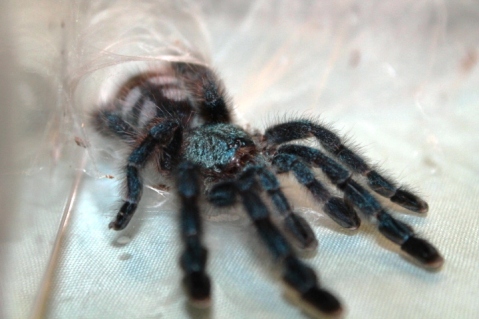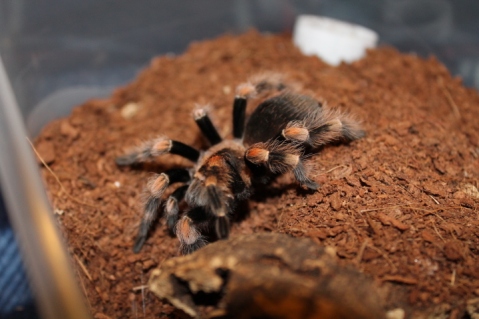Keeping Live Invertebrates
It has been a while since I’ve posted, but since it’s cold out I can’t really post collecting trips (though I do have a fun three part post coming up), so I thought I would give you all some info on one of my favorite hobbies. To a lot of people, keeping live invertebrates is a strange and foreign concept. Even more so when you say that it involves bunches of tarantulas, beetles, cockroaches, scorpions, amblypygids, true spiders, and mantids.
Now, I can certainly understand how some people are unnerved by this, but it is not as scary as it seems. The invert world gives hobbyists a very wide variety of creatures that they can keep as pets. I look at it as keeping several different breeds of dogs or cats. These just take up less space and have much less demanding husbandry.
For most of these creatures, all you really need is a space for an enclosure, food (which can range from vegetables and dry cat/dogfood, all the way up to live feeders, like crickets and roaches), water from time to time, and something to hide under. They really are quite simple to keep and can be very rewarding. I recently had my first peppered roach molt to adulthood and it’s an absolute beauty. Two of my mantids will be having their final molts as well within a month, so I’m very excited for that to happen.
When it comes to space, a lot of it actually goes on the keeper rather than the pet. I’ve seen people make absolutely amazing enclosures for their invert pets, while others (like me) keep them very sparse and on the smaller side. Both sides have their positives and negatives. Many keepers like to give their pet an enclosure that mimics its natural environment, even going as far as putting in live plants. The more natural the enclosure, the more work the keeper will likely have to put in, but the invert will be in a more naturalistic setting that it can enjoy. Most inverts do well with a simple enclosure and can be kept like that for their entire lives.
Another perk of keeping inverts is that they are typically short lived. Mantids won’t usually live for more than a year, and many true spider species will not live much longer than a year. Many roach species will live for 1-2 years. Now, there are always exceptions to the rule. Sand spiders (Sicarius sp.) can live for a decade and most tarantulas can live for more than 5 years, with certain genera (Brachypelma and Grammostola being most noted) can push 20-40 years! That’s a very long lived pet!
If you are thinking about buying or even going out and finding your own invert pets, do you research first. Many of these wonderful creatures have simple husbandry, but there are always exceptions to the rule and some species can be considered more advanced than others for a variety of reasons. You certainly would not want to start off with an advanced species if you have not gained experience with a starter species first! That being said, thorough research can lead to advanced species being one of the first being bought, but this likely is not what normally happens.
As an example, in the tarantula world, people typically start off with something like a rose hair (Grammostola rosea) or Mexican red knee (Brachypelma smithi), while some the more adventurous ones will start off with a species of pink toe (Avicularia sp.). These are considered to be beginner species because they are usually docile, hardy, easy to find in the pet trade, and do not have medically significant venom. After gaining some experience with these species, keepers can move on to intermediate species, such as those in the genus Psalmopoeus or Hapalopus. Some keepers skip the intermediate stage and move right to advanced species, such as those in the genus Poecilotheria or Haplopelma. Note: please only do that if you are comfortable with the species you already have, have done your research on these new species, and are willing to take on the potential hazards keeping these can present. Intermediate or advanced species are typically very skittish, can be defensive or aggressive, move very quickly (Poecilotheria will “teleport” across their enclosures), and may have medically significant venom.
For those of you that may still be on the fence about keeping live inverts as pets, there are a wide variety of orders, families, and species you can choose from. Don’t want a tarantula? You can keep beetles as pets. Feeling adventurous? Maybe a scorpion or huntsman spider is up your alley. These “bugs” are “ugly”, how bout something cute? That jumping spider on the side of your house is pretty freaking cute. Want something weird looking? Amblypygids and mantids are always a good way to go. I even know people that rear caterpillars into beautiful cecropia moths. There is something out there for everyone, especially if you hold your mind open to all the options and are willing to check out the wide world of invertebrates that we live in.



Trackbacks / Pingbacks